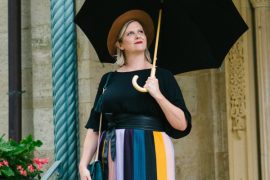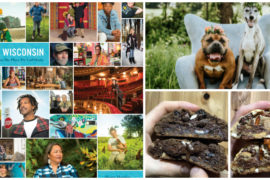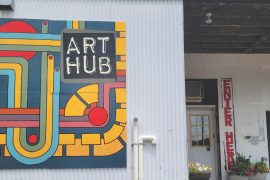TO CUBA
IN SEARCH OF COLOR“CHARM IS A PRODUCT OF THE UNEXPECTED.” -JOSE MARTI
Winter hit me hard this year. Like so many people in Northern climates, I struggle with seasonal affective disorder or, as it is aptly abbreviated, SAD. When the cold months come around, I lose motivation for the things I usually enjoy. Winter, for me, is a half-conscious haze of coffee and carbs, consumed without guilt because I’m absolutely certain the sun will never reappear and I’ll never need to wear a bathing suit again. But most of all, winter brings day after day of color deprivation. A gray, frozen lake shrouds a silver sky. Bare branches cast sinister shadows on snowbanks. And, beneath the shell of my puffy black coat, I retreat further and further into my own head.
You might think that, as a novelist, being buried in my own thoughts is a good thing. I assure you, it’s not. “The analytical, ruminating side of my brain is the ultimate killer of creativity. For inspiration in my writing, I have to look outward at the world around me. And when that world seems sucked of all life and color, as it does during a Wisconsin February, I struggle to put fingers to keyboard and words to paper.
It was in the midst of this seasonal slump that my husband and I decided to go to Cuba. It seemed that every travel article I read urged that, with the U.S. government finally loosening travel restrictions to Cuba, the time to go was now.
After reading countless regulations, filling out two Cuban visa applications, and boarding one charter flight, we were on our way to Havana. Before we even landed on the island, I caught a glimpse of the colors I’d been craving, “The navy blue waves of the deep Gulf waters gave way to muted turquoise hues near shore, forming an aquatic ombre. And green! “The farm fields and tropical foliage were a balm to my winter-worn soul.
I glutted myself on more color at the Almacenes San Jose, the handicraft market housed in an old shipping warehouse on the edge of Havana’s 16th-century harbor. Row after row of vendor stands boasted vibrant textiles, smooth wood sculptures, pottery and even handmade shoes and toys. At the market’s edges stood scaffolding hung with paintings in brilliant yellows, blues and reds. Mural-sized landscapes and impressionist street scenes mingled among sketches of American celebrities from the 1950s.
After dark, I feasted on saturated shades of gold, lime and tangerine displayed in the costumes and sets of the famed Tropicana nightclub. Glittering dancers and acrobats congaed and vaulted across the stage to live orchestra music, while international tourists snapped photos and sipped pink rum cocktails.
Even the taxis parked outside our hotel in the morning were masterpieces in their own right. In a single taxi line we saw a yellow 1929 Mercedes operable only by hand crank, a green Soviet-era Lada, and a blue Chevy BelAir with fins as smooth as a shark’s. In this communist country, where cars are difficult and expensive to acquire, each vehicle on the road seems to run on a combination of bartered parts and pure human ingenuity.
It’s that ingenuity that struck me most about my brief trip to Havana. It would be easy to assume that, in a country shielded from outside influence for the last 50 years, the arts would suffer. After all, with goods of all types in limited supply, even obtaining the materials necessary to paint, sculpt or play an instrument could be difficult.
Yet despite these challenges, the island has an undeniable cultural vibrancy. Evidence of creative expression is everywhere, from public art in parks to live music streaming from bars and cafes. One of the country’s most famous historical figures, aside from Fidel Castro, is the poet Jose Marti. A sculpture of his face, over 10 stories tall, adorns the side of a government building near Revolution Square, where yet another memorial to Marti—a towering obelisk—crowns Havana’s highest point.
Seeing the way the arts flourished in Cuba, despite so many challenges, humbled me. It also renewed my appetite for color and creativity. Back home, I had been making excuses for why I wasn’t writing. My family life was too busy. My day job was too demanding. I wasn’t in the right frame of mind to do my best work, “These excuses fell away as I realized that no artist has perfect conditions under which to create. It’s from la lucha, the struggle, that our best work is born.



